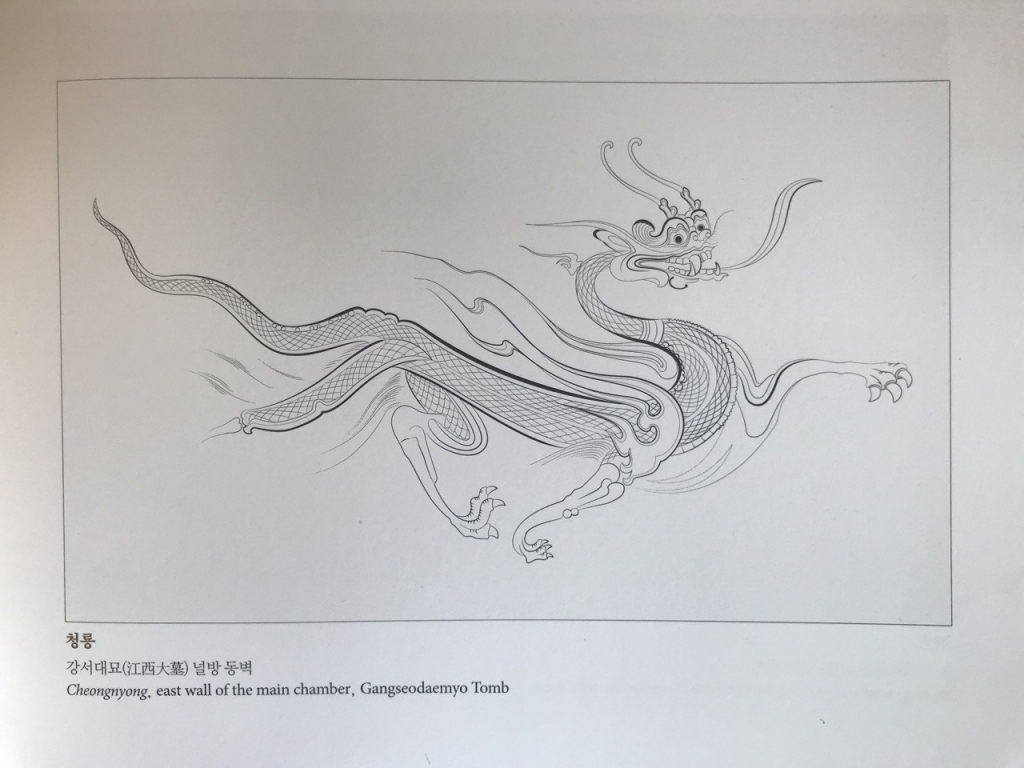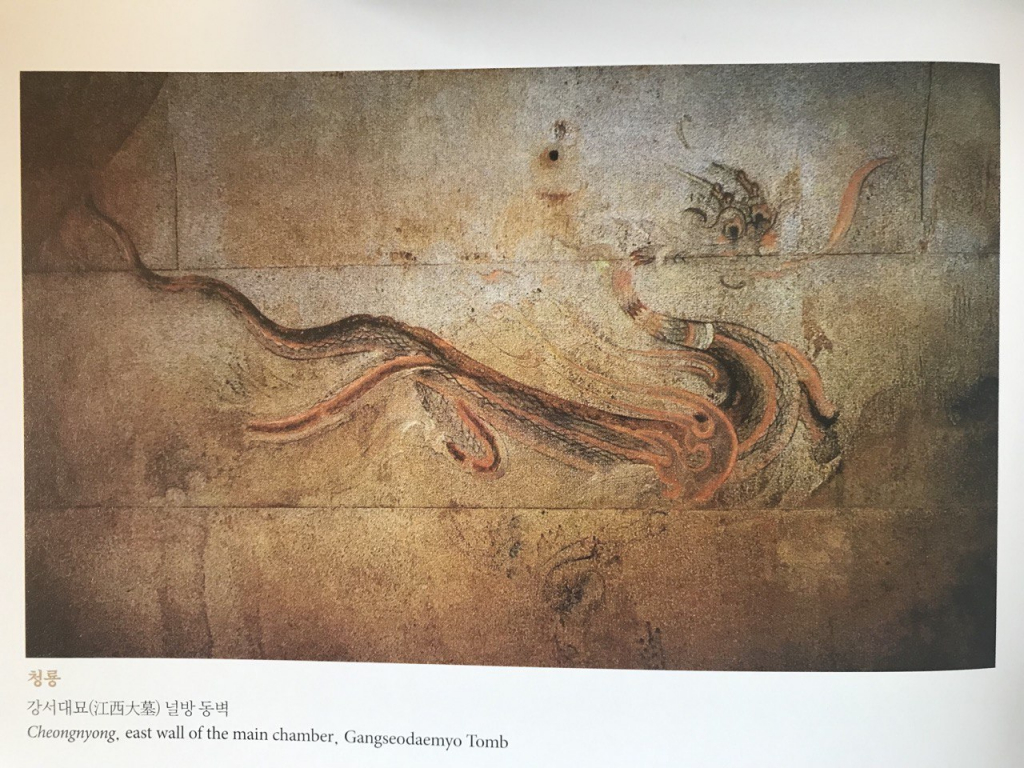 Park Yoon Hee. Celestial Motifs : Ancient Tomb Murals of the Goguryeo Dynasty. Daejeon, NRICH, 2020.
Park Yoon Hee. Celestial Motifs : Ancient Tomb Murals of the Goguryeo Dynasty. Daejeon, NRICH, 2020.It is a normal Monday morning at the ICCROM Library. I start the day by flipping through the mail piling up on my desk – most of the envelopes contain new journal issues, the latest of our periodical subscriptions… But then, there! The last, hefty envelope. I carefully open it and observe its contents: a matte, deep blue book, adorned with golden dragons enveloped in a mesh of ornamental plant motifs. Almost as an afterthought, I read the title that the artwork frames, written in Korean and English: Celestial Motifs: Ancient Tomb Murals of the Goguryeo Dynasty.
Celestial Motifs is the latest volume in a series of donations from the National Research Institute of Cultural Heritage (NRICH), in Daejeon, Republic of Korea. NRICH is the research organ of the Korean Cultural Heritage Administration (CHA): one of ICCROM’s generous partners in many of our programmes, such as CollAsia, First Aid and Resilience for Cultural Heritage in Times of Crisis (FAR), World Heritage Leadership (WHL) and RE-ORG. We thank the CHA for its long-standing cooperation and support, from which the Library and all its users benefit.
But back to this wonderful publication. Like all of NRICH’s books, the book immediately impresses with the extraordinary quality of its material finish: the beautiful, eggshell-coloured paper, the perfect thread binding, the appealing design and clear layout. After admiring the technical qualities that make a bunch of pages a real book, destined for a long life in the library, attention is due to the book’s content. The bilingual publication documents the iconography of 271 wall paintings in tombs from the Goguryeo Dynasty. It was produced as part of an academic research project, initiated by NRICH’s Research Division of Artistic Heritage in 2018, about wall paintings in tombs on the Korean peninsula.
The book is divided into three parts. The first section, “Depicting the Celestial World,” showcases the paintings decorating the tombs’ vaulted ceilings, which represent the sky and the heavens. We also see paintings of plants (especially the great variety of lotus flowers) depicted with mystical animals and immortal beings. Representations of yeonhwa hwasaeng – the concept of birth from the lotus – are also covered in this chapter.
 Park Yoon Hee. Celestial Motifs : Ancient Tomb Murals of the Goguryeo Dynasty. Daejeon, NRICH, 2020.
Park Yoon Hee. Celestial Motifs : Ancient Tomb Murals of the Goguryeo Dynasty. Daejeon, NRICH, 2020. The book’s second part focuses on representations of life after death. Readers can admire some of the finest aspects of the wall paintings: depictions of the Sasindo, or the four guardian deities, which symbolize the cardinal directions. Cheongnyong, the blue dragon, symbolizes the east; Baekho, the white tiger, the west; Jujak, the red phoenix, the south; and Hyeonmu, the black turtle and snake, the north. (See pictures 1 and 2.)
The third and final chapter concerns the tombs’ representations of the human world – in life and in death. In Goguryeo, it was believed that the deceased’s soul lived on, and that portrayals of positive events from their life could bring goodwill and blessings to the bereaved; great importance was placed on rites and celebrations for the dead. Accordingly, in this section, readers are immersed in scenes of daily life, such as a tea ceremony, as well as scenes of solemn processions, in which soldiers, horses, musicians and dancers decorate the pages.
This inspiring publication gives insight into the rich and refined tradition of Goguryeo Dynasty wall paintings. Together with the many titles the CHA has given the ICCROM Library over the years, Library visitors can immerse themselves in the multifaceted Korean culture. Though the Library’s original purpose was to collect documentation on theoretical and technical aspects of cultural heritage conservation, we have been building up this mission with the ultimate goal of championing cultural diversity. We strongly believe that knowledge of the uniqueness and values of all cultures of the world is a prerequisite for growing and fostering respect, tolerance and the peaceful coexistence of peoples.
Last, but not least, we take this opportunity to invite other Member States' cultural heritage institutions to send us their publications. The Library will gratefully welcome these materials and put them at the disposal of the community. It will be for all of our benefit!
Happy reading,
The ICCROM Library Team
